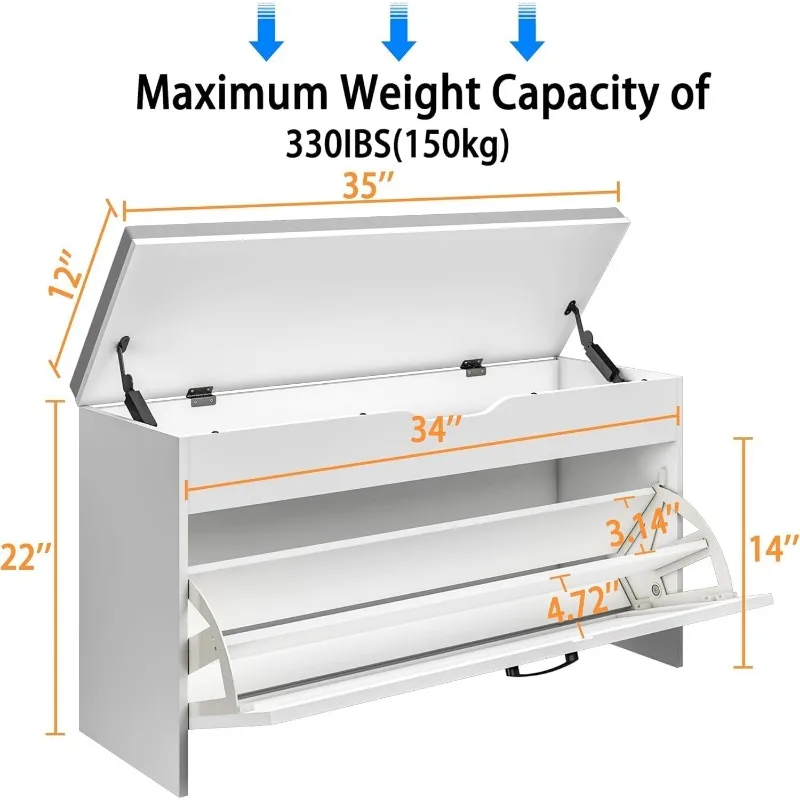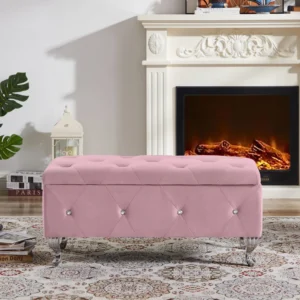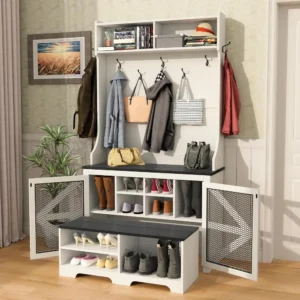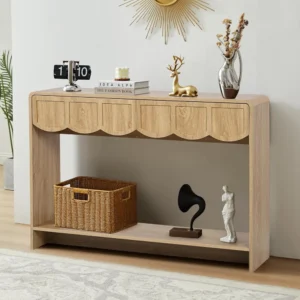Introduction to Apartment Entryway Challenges
Walking into your apartment should feel like coming home to a peaceful sanctuary—not stepping into a chaotic jumble of shoes, coats, and keys. Yet for many apartment dwellers, the entryway becomes exactly that: a frustrating bottleneck where everyday life piles up in a small space.
Apartment entryways present unique challenges that can make organization seem impossible:
- Limited square footage (often less than 20 square feet)
- Rental restrictions prohibiting permanent modifications
- Lack of defined entryway space in open floor plans
- Accumulation of daily essentials with nowhere to go
Despite these obstacles, your entryway deserves attention as both the first impression of your home and the transition zone that sets the tone for your day. With thoughtful organization and design choices, even the tiniest apartment entrance can become functional and welcoming.
The key lies in maximizing vertical space, investing in multi-functional pieces, and finding rental-friendly solutions that won’t sacrifice style. Many apartment residents have transformed their entryways by implementing compact storage benches for small apartments that serve multiple purposes while maintaining a sleek profile.
Throughout this guide, we’ll explore practical strategies to overcome common entryway challenges, regardless of your apartment’s size or configuration. Get ready to transform your entrance from a cluttered afterthought into an organized, stylish introduction to your home.
Understanding Your Entryway Needs: Form, Function, and Flow
Before diving into specific solutions, take time to assess what your entryway actually needs to accomplish. This thoughtful planning will prevent wasted money on storage that doesn’t serve your lifestyle.
Assessing Your Space
Start by measuring your available area—width, depth, and ceiling height. Even spaces as narrow as 24 inches can accommodate smart storage solutions when properly planned. Note architectural features like doors that swing inward, electrical outlets, or awkward corners that might impact your organization strategy.
Identifying Essential Functions
Your entryway should accommodate the items you use daily. Make a quick inventory:
– Do you need space for multiple coats or just a few jackets?
– How many pairs of shoes need accessible storage?
– Do you require a spot for pet leashes or children’s backpacks?
– Where do keys, mail, and phones currently land?
The goal isn’t to store everything in your entryway, but rather to create homes for frequently used items that would otherwise become clutter. Less frequently used items can be stored elsewhere in your apartment.
Creating Defined Boundaries
In open floor plans, establishing a visual boundary for your entryway creates order. This might be as simple as a strategically placed rug or a change in wall color. Organizing small apartments with benches can help create this definition while adding functionality.
Understanding your specific needs allows you to make targeted improvements rather than generic fixes. An entryway solution should reflect your daily habits and simplify your routines—when it’s designed around how you actually live, you’re more likely to maintain the organization long-term.
Essential Design Principles for Small Apartment Entryways
Successful apartment entryways follow several key design principles that maximize both functionality and aesthetic appeal in limited space.
Vertical Thinking
When floor space is scarce, look up! Walls offer abundant storage potential that doesn’t consume precious floor area. Utilizing the full height of your walls multiplies your storage capacity while drawing the eye upward, creating the illusion of a larger space.
Multi-functionality
In small spaces, every item should earn its keep by serving multiple purposes. A simple bench that offers both seating and storage effectively does the work of two separate pieces of furniture while occupying the footprint of just one.
Visual Expansion
Strategic design choices can make your entryway feel significantly larger than its actual dimensions. Mirrors reflect light and create the illusion of depth, while proper lighting eliminates shadows that can make spaces feel cramped.
Rental-Friendly Approaches
Apartment living often means working within the constraints of rental agreements. Fortunately, there are numerous non-permanent solutions that create storage and style without risking your security deposit. Apartment-friendly storage bench ideas offer rental-safe options that combine aesthetics with practicality.
Consistency
Your entryway should feel like a natural extension of your home’s overall style. Maintaining consistency in color palette, materials, and design aesthetic creates a cohesive look that flows into the rest of your living space.
Maintenance
Easy-to-clean surfaces and simple organization systems ensure your entryway stays functional. Even the most beautiful entryway fails if its maintenance becomes a burden—design with daily upkeep in mind.
By applying these foundational principles to your specific space, you’ll create an entryway that not only accommodates your needs but enhances your entire living experience.
Wall-Mounted Storage Solutions: Maximizing Vertical Space
The walls of your entryway represent valuable real estate in your apartment—utilize them properly, and you’ll dramatically increase your storage capacity without sacrificing floor space.
Floating Shelves
Floating shelves provide sleek, visually lightweight storage for everyday essentials. Install a small shelf at 48-54 inches from the floor for keys, wallet, and mail, and consider a second shelf higher up for decorative items or seasonal accessories. For rental properties, look for sturdy adhesive mounting options that can hold up to 5 pounds.
Wall-Mounted Hooks and Rails
Hooks are entryway workhorses that take seconds to install but provide immediate organization:
- Individual hooks work well for heavier items like backpacks and winter coats
- Hook rails maximize horizontal wall space for multiple light items
- Staggered hook arrangements create visual interest while remaining functional
- Command hooks and similar adhesive options offer rental-friendly alternatives
Door-Back Organizers
The back of your entry door offers hidden storage potential. Over-the-door organizers with multiple pockets can store gloves, scarves, sunglasses, and other small items that would otherwise contribute to entryway clutter.
Pegboard and Grid Systems
Customizable pegboard systems allow you to rearrange hooks, small shelves, and accessories as your needs change. Modern versions come in stylish finishes that elevate them from workshop staples to design features. Install a pegboard section between 40-65 inches from the floor for optimal accessibility.
Key and Mail Organizers
Small wall-mounted key hooks with attached mail slots prevent the daily hunt for misplaced keys while keeping bills and correspondence organized. Look for compact designs that keep paper clutter contained.
Many apartment residents find that combining vertical storage with seating creates the most efficient use of space. Entryway coat rack benches offer comprehensive solutions that address multiple storage needs while maintaining a cohesive look.
When installing wall storage in rental units, always check weight limits for adhesive products and consider using furniture to disguise any necessary wall anchors. With thoughtful planning, even temporary wall storage can look intentional and stylish.
Multi-Functional Furniture: Space-Saving Heroes
When every square inch matters, furniture that performs multiple roles becomes essential. These versatile pieces serve as the foundation of well-organized apartment entryways.
Storage Benches
The ultimate entryway multitasker, storage benches provide:
– A place to sit while putting on or removing shoes
– Hidden storage for items like scarves, gloves, and extra shoes
– A display surface for decorative items or a landing spot for bags
Look for benches with hinged tops for easy access or drawer-style openings that don’t require clearing the surface to access contents. Ideal dimensions for apartment entryways are 30-42 inches wide with a depth of 14-18 inches—narrow enough not to obstruct traffic while still providing functional seating.
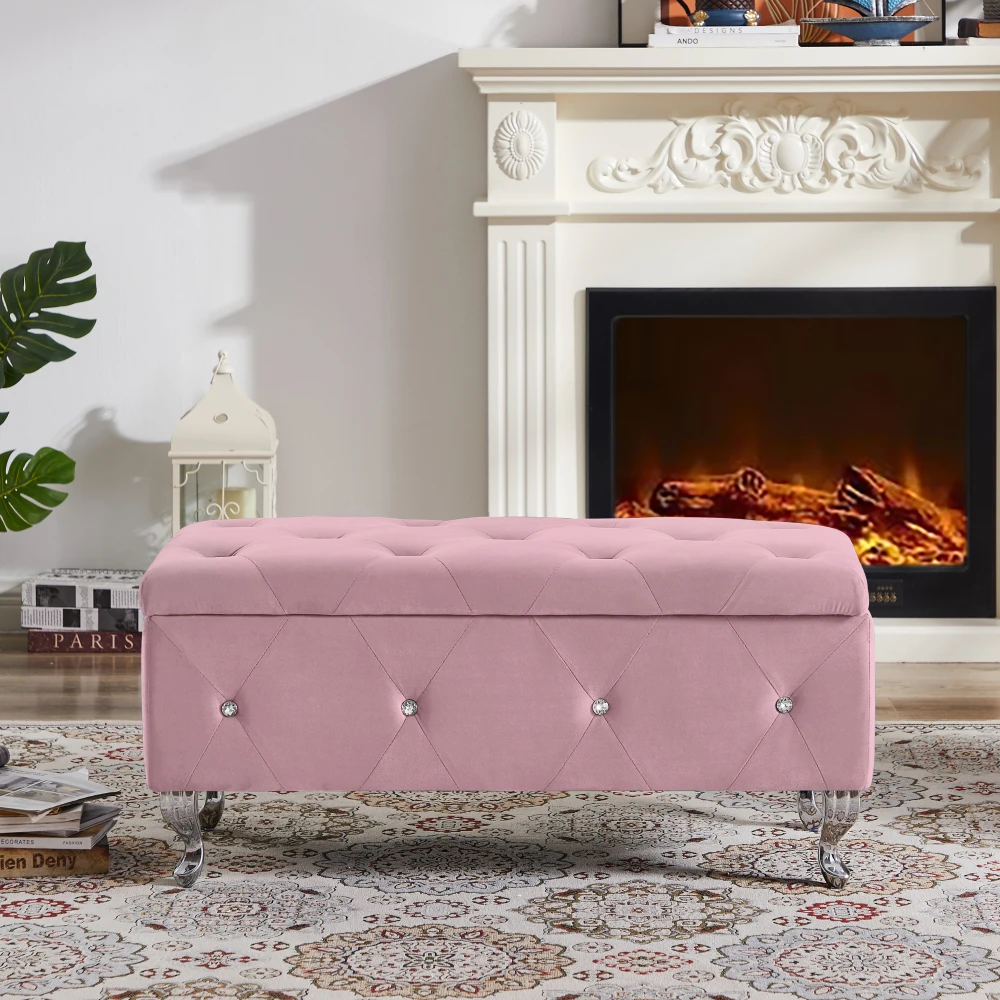
Narrow Console Tables
Slim console tables with built-in storage can transform even the narrowest hallway into a functional entryway:
– Look for tables no deeper than 10-12 inches to maintain good traffic flow
– Choose designs with drawers for hiding small items
– Consider tables with lower shelves for shoes or decorative storage baskets
Shoe Cabinets
Specialized shoe cabinets with tilting doors keep footwear organized while maintaining a slim profile:
– Typical depths of just 6-8 inches make them perfect for narrow spaces
– Flat tops provide display surfaces for lamps, plants, or mail sorters
– Closed storage keeps visual clutter at bay
Nesting Tables or Stools
For truly tight spaces, consider nesting furniture that can be tucked away when not needed:
– Nesting stools provide on-demand seating without permanent footprint
– Graduated heights offer versatility for different uses
– Look for designs with built-in storage compartments for maximum functionality
For particularly challenging spaces, small entryway benches designed specifically for compact areas can transform even the tiniest entrance. When selecting any multifunctional piece, verify its weight capacity if you plan to use it for seating, and choose materials that can withstand daily wear in a high-traffic area.
Creative Floor Solutions: Making Every Square Inch Count
While vertical space offers abundant storage opportunities, thoughtful floor organization remains crucial for a fully functional entryway.
Strategic Rug Placement
A well-placed entryway rug does more than add style:
– Defines your entryway zone in open floor plans
– Protects flooring from outdoor dirt and moisture
– Adds visual warmth to the space
Choose a rug sized appropriately for your space—typically 2×3 feet for very small entryways or 3×5 feet for more generous spaces. Opt for low-pile, dark-patterned designs that hide dirt and stand up to heavy foot traffic.
Compact Shoe Storage
Keep shoes contained and organized with space-efficient solutions:
– Vertical shoe racks utilize height rather than floor space
– Under-bench shoe shelves maximize otherwise wasted space
– Stackable shoe organizers adjust to your changing collection
For optimal space efficiency, limit entryway shoe storage to 3-5 pairs per person and store seasonal or special occasion footwear elsewhere.
Basket and Bin Systems
Flexible and portable, baskets bring order to entryway chaos:
– Small baskets for keys, sunglasses, and other pocket items
– Medium bins for gloves, hats, and scarves
– Larger baskets for umbrellas or kids’ gear
Look for stackable designs or containers that slide under benches or console tables.
Weather-Resistant Solutions
For apartments in rainy or snowy climates:
– Slim boot trays (typically 15×30 inches) contain moisture from wet shoes
– Umbrella stands with drip trays prevent water damage to floors
– Waterproof mats protect surfaces while shoes dry
The most successful apartment entryways incorporate narrow entryway benches that provide both seating and shoe storage without protruding too far into walkways. When arranging floor items, always maintain a clear pathway of at least 30 inches to ensure comfortable movement through the space, especially in emergency situations.
Light and Mirror Magic: Creating Visual Spaciousness
Strategic use of light and reflection can visually expand your entryway, making it feel more spacious and welcoming regardless of its actual dimensions.
Mirror Placement
Mirrors serve as powerful tools for visual expansion when strategically positioned:
– Place mirrors opposite light sources to multiply illumination
– Position at eye level (typically 57-65 inches from the floor to center)
– Choose shapes that complement your space—horizontal mirrors visually widen, while vertical mirrors heighten
A mirror’s effect is maximized when it reflects something visually appealing rather than a blank wall or clutter.
Lighting Solutions
Proper lighting transforms the functionality and ambiance of your entryway:
– Wall sconces save precious table space while providing directed light
– Battery-operated puck lights offer illumination without wiring
– Motion-sensor options provide hands-free convenience
Aim for a brightness level of approximately 300 lumens in an entryway, and choose warm white light (2700-3000K) for a welcoming glow.
Color and Finish Selection
Strategic color choices enhance spatial perception:
– Light, cool wall colors recede visually, creating a sense of openness
– Glossy finishes reflect light, brightening the space
– Consistent color schemes between the entryway and adjacent rooms create flow
For rental properties, temporary wallpaper or large artwork can introduce color without paint.
Rental-Friendly Lighting
When electrical modifications aren’t an option:
– Battery-powered wall sconces install without wiring
– Plug-in pendant lights with cord covers maintain a clean look
– Floor lamps with small footprints provide ambient illumination
The most effective entryway designs maintain a feeling of openness while providing necessary functionality. Minimalist hallway benches for apartments complement this approach by offering essential seating and storage without visual heaviness.
Remember that light colors, reflective surfaces, and proper illumination work together to create an entryway that feels spacious and inviting—even when working with minimal square footage.
Rental-Friendly Customization: Temporary Solutions with Lasting Impact
Rental restrictions shouldn’t limit your ability to create a functional, personalized entryway. These non-permanent solutions offer significant organizational benefits without risking your security deposit.
Command Hooks and Adhesive Solutions
Adhesive hooks and mounting strips have revolutionized rental decorating:
– Small Command hooks (supporting 1-3 pounds) work well for keys and light accessories
– Medium options (holding 3-5 pounds) can support small bags and lightweight coats
– Heavy-duty versions (supporting up to 7-8 pounds) handle winter coats and backpacks
Always clean surfaces with alcohol before applying adhesive products and wait the recommended time before hanging items to ensure maximum holding power.
Tension Rods and Pressure-Mounted Systems
Tension-based solutions install without tools or damage:
– Tension curtain rods across doorway corners create hanging space
– Spring-tension corner poles with hooks utilize otherwise wasted space
– Shower-curtain tension rods inside closets add an extra hanging tier
Removable Wallpaper and Decals
Temporary wall coverings define and enhance your entryway:
– Peel-and-stick wallpaper creates an accent wall without paint
– Removable decals add personality and visual interest
– Floor decals can define an entryway zone in open floor plans
Freestanding Solutions
Independent structures require no mounting at all:
– Leaning ladder shelves provide vertical storage with minimal footprint
– Coat racks with built-in umbrella stands offer all-in-one solutions
– Room divider screens create entryway definition in studio apartments
Furniture Anchoring Options
When heavier items are necessary, consider:
– Furniture anchoring kits with minimal wall impact
– Spring-tension rods between ceiling and furniture for additional stability
– Museum putty under furniture bases for stability without attachment
Maximizing compact benches for renters offers additional insights for creating functional seating that respects rental agreements. When implementing any temporary solution, document the original condition of your space and always test removal methods on inconspicuous areas first to ensure they live up to their damage-free promises.
Stylish Organization Systems: Combining Form with Function
Organization doesn’t have to be utilitarian. By choosing storage solutions that align with your personal style, your entryway becomes both highly functional and visually appealing.
Coordinated Storage Systems
Create visual harmony by selecting storage pieces with common elements:
– Matching finishes across different storage types (hooks, shelves, benches)
– Consistent hardware styles throughout the entryway
– Complementary materials that create a cohesive look
This coordinated approach makes separate organizational elements feel like intentional design features rather than afterthoughts.
Decorative Containers
Attractive containers transform necessary storage into style statements:
– Woven baskets add warmth and texture while hiding everyday items
– Decorative boxes in coordinating colors create visual order
– Vintage containers repurposed as storage add personality and character
Look for containers with lids to keep visual clutter at bay while maintaining easy access to contents.
Color-Coding and Labeling
Simple organization systems maintain order, especially in shared apartments:
– Color-coded hooks or baskets for different family members
– Small, attractive labels on storage bins
– Consistent placement cues that establish helpful habits

Incorporating Personal Style
Your entryway organization can reflect your aesthetic preferences:
– Minimalist: Clean lines, hidden storage, and neutral colors
– Bohemian: Natural materials, layered textures, and eclectic containers
– Modern: High-contrast elements, geometric shapes, and metallic accents
– Traditional: Classic forms, rich wood tones, and symmetrical arrangements
Seasonal Rotation Strategies
Keep your entryway functional year-round by planning for seasonal changes:
– Designated storage for current-season items only
– Swappable inserts for benches and containers
– Adjustable hook heights to accommodate varying coat lengths
For comprehensive organization that elegantly conceals everyday clutter, many apartment dwellers find success with shoe storage bench entryway combinations that keep footwear contained while presenting a clean, cohesive appearance.
When well-designed, organization systems create a positive psychological impact—reducing daily stress and establishing efficient habits that make coming home a pleasure rather than a frustration.
Coat Rack Shoe Bench, Corner Entryway Bench, Corner Hall Tree, Shoe Bench for Entryway
$313.58 Select options This product has multiple variants. The options may be chosen on the product pageShoe Storage Bench for Entryway
$459.02 Select options This product has multiple variants. The options may be chosen on the product pageEntryway Coat Rack Bench, Entryway Hall Tree, Farmhouse Mudroom Bench, Mudroom Bench with Shoe Storage
$805.09 Select options This product has multiple variants. The options may be chosen on the product pageEntryway Bench with Cushion, Small Entryway Bench
$466.79 Select options This product has multiple variants. The options may be chosen on the product pageBench with Hooks and Storage, Entryway Coat Rack Bench, Entryway Hall Tree, Mudroom Bench with Shoe Storage, Mudroom Coat Rack Bench
$793.73 Select options This product has multiple variants. The options may be chosen on the product page- Price range: $785.40 through $897.63 Select options This product has multiple variants. The options may be chosen on the product page
Supplementary Content: Advanced Entryway Hacks and Considerations
Can apartment dwellers create an entryway where none exists?
Absolutely! In apartments with doors that open directly into living spaces, you can create a defined entryway zone using:
– Room dividers or open bookcases as spatial boundaries
– Rugs to visually anchor and define the entry area
– Consistent decorative elements that signal “entryway”
– Wall treatments (like temporary wallpaper) that differentiate the space
What defines a truly effective apartment entryway?
An effective entryway successfully balances form and function by:
– Accommodating daily routines without creating obstacles
– Providing appropriate storage for frequently used items
– Creating a welcoming transition from public to private space
– Reflecting the overall style of your home
– Maintaining its organization with minimal effort
How do entryway needs differ across apartment styles?
Different apartment layouts present unique entryway challenges:
– Studio apartments require ultra-compact solutions that don’t dominate the space
– Railroad apartments need narrow passage maintenance with wall-mounted solutions
– Loft-style units benefit from room dividers that create defined entry zones
– Garden-level apartments need moisture-resistant materials for wet weather items
What are the most common entryway organization mistakes?
Avoid these frequent pitfalls when organizing your apartment entrance:
– Overcrowding with too many pieces of furniture
– Under-utilizing vertical space
– Choosing storage that’s too shallow for intended items
– Failing to create homes for small, everyday objects
– Selecting materials that can’t withstand entryway wear-and-tear
For apartments with challenging layouts, space-saving entry benches for small homes offer tailored solutions that address unusual configurations while maintaining functionality.
How to Implement a Complete Entryway Transformation
Transforming your apartment entryway doesn’t have to happen overnight. Follow these steps for a successful, stress-free makeover.
Step 1: Measure and Assess
Before purchasing anything:
– Measure your available space precisely (width, depth, height)
– Document problem areas and pain points in your current setup
– Identify your most frequent entryway activities
– Take photos of your space for reference when shopping
Step 2: Declutter and Categorize
Begin with a clean slate:
– Remove everything from your current entryway
– Sort items into categories: everyday essentials, seasonal needs, and items that belong elsewhere
– Establish exactly what needs to be accommodated in your new setup
Step 3: Plan Your Layout
Create a functional blueprint:
– Sketch your space with accurate measurements
– Identify zones for different activities (hanging coats, removing shoes, setting down bags)
– Plan traffic patterns to ensure easy movement
– Determine primary storage needs by frequency of use
Step 4: Budget and Prioritize
Establish financial parameters:
– Set a total budget for your transformation
– Identify “must-have” versus “nice-to-have” elements
– Research price ranges for key pieces
– Consider a phased approach if budget constraints exist
Step 5: Select and Implement Solutions
Make thoughtful purchases:
– Start with anchor pieces like benches or console tables
– Add wall storage once floor pieces are in place
– Incorporate smaller organizational elements
– Add lighting and decorative elements last
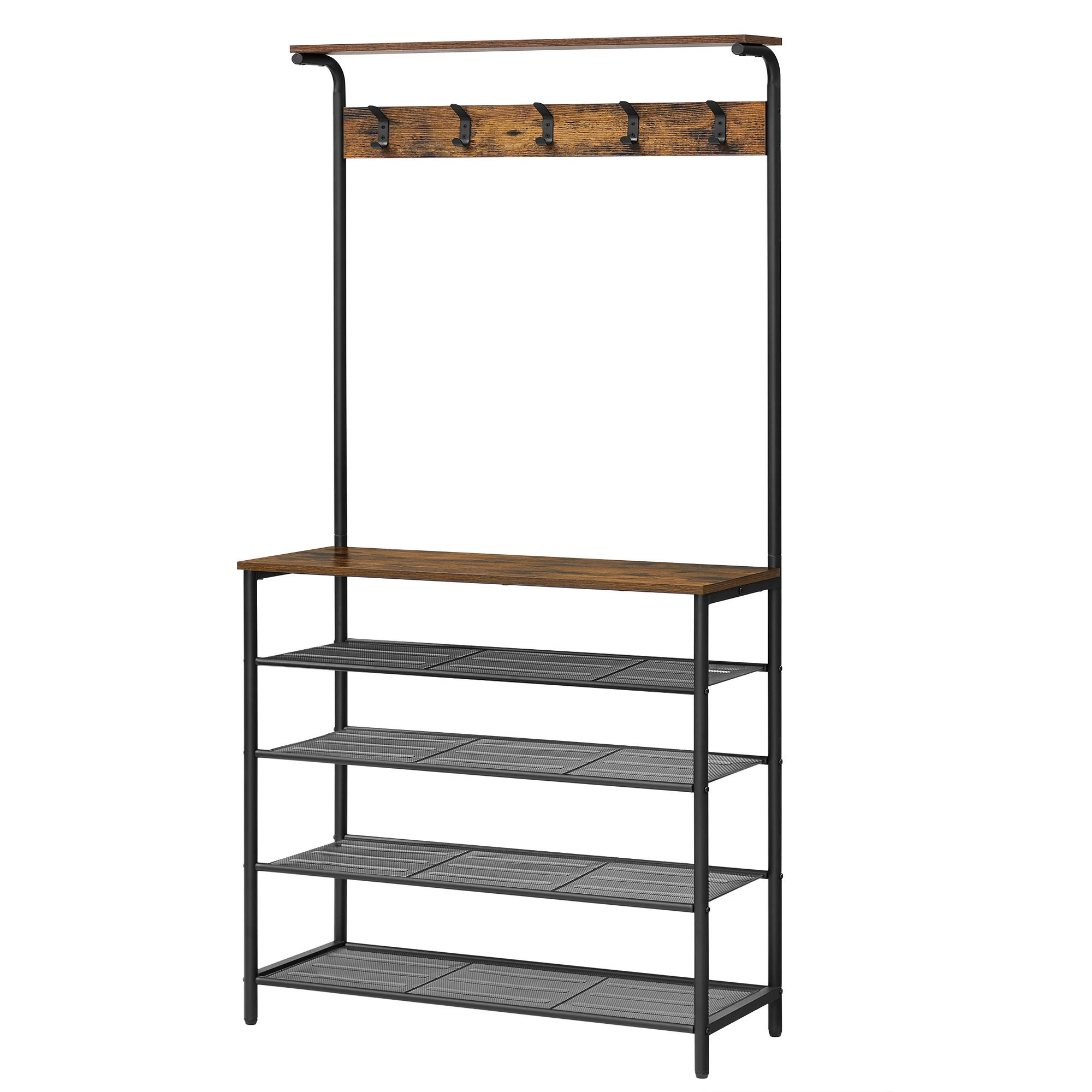
Phased Implementation Strategy
If working with budget or time constraints:
– Phase 1: Address immediate functional needs (basic storage for everyday items)
– Phase 2: Add secondary storage and seating elements
– Phase 3: Incorporate lighting improvements and decorative touches
Maintenance Routines
Establish simple habits to maintain your newly organized space:
– Implement a “one-in, one-out” policy for entryway items
– Schedule quick 5-minute reset sessions at the end of each day
– Perform seasonal evaluations to adjust for changing needs
For apartments with challenging corner spaces, corner hall tree solutions maximize otherwise awkward areas while providing comprehensive storage.
Remember that the perfect entryway reflects your specific needs and lifestyle. By thoughtfully analyzing how you use your space and selecting appropriate solutions, you’ll create an entrance that welcomes you home while setting the tone for your entire apartment.

